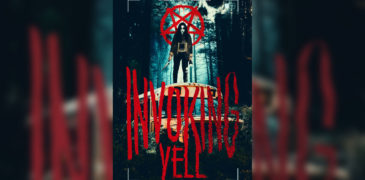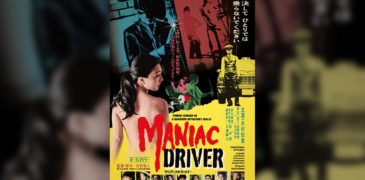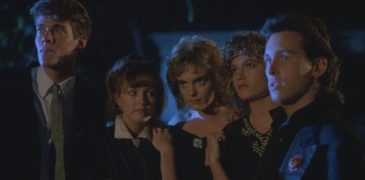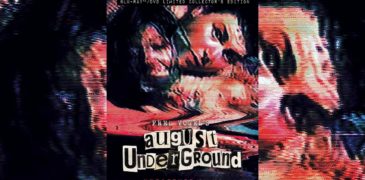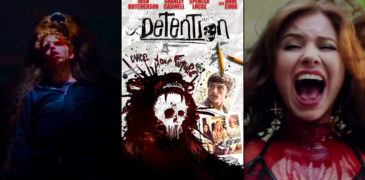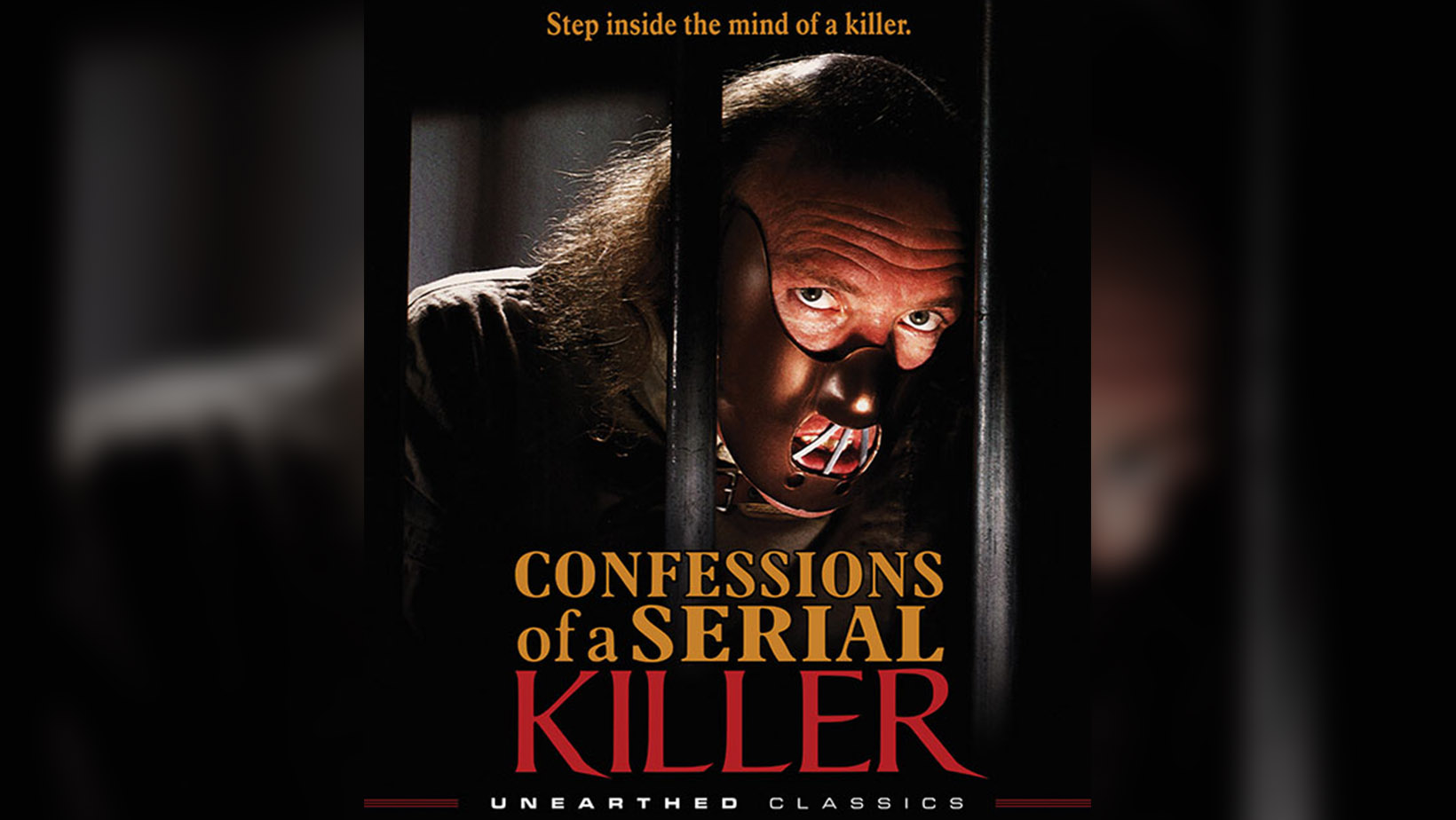
Confessions of a Serial Killer is a 1985 American horror thriller, written and directed by Mark Blair. Surprisingly, the film is the only writer/director credit to Mark’s name, never venturing out into filmmaking after the completion of this title. The title was picked up for distribution by King of the B-Movie, Rodger Corman, who delayed American release due to its similarities with another film based on similar events, Henry: Portrait of a Serial Killer (1986).
After being arrested, a Texas man begins confessing to the brutal murder of over 200 women. He recounts his random selection of victims and his traveling companions, his friend and friend’s sister. But the police can’t be sure whether to believe him or not until he locates a body and shows them some Polaroids.
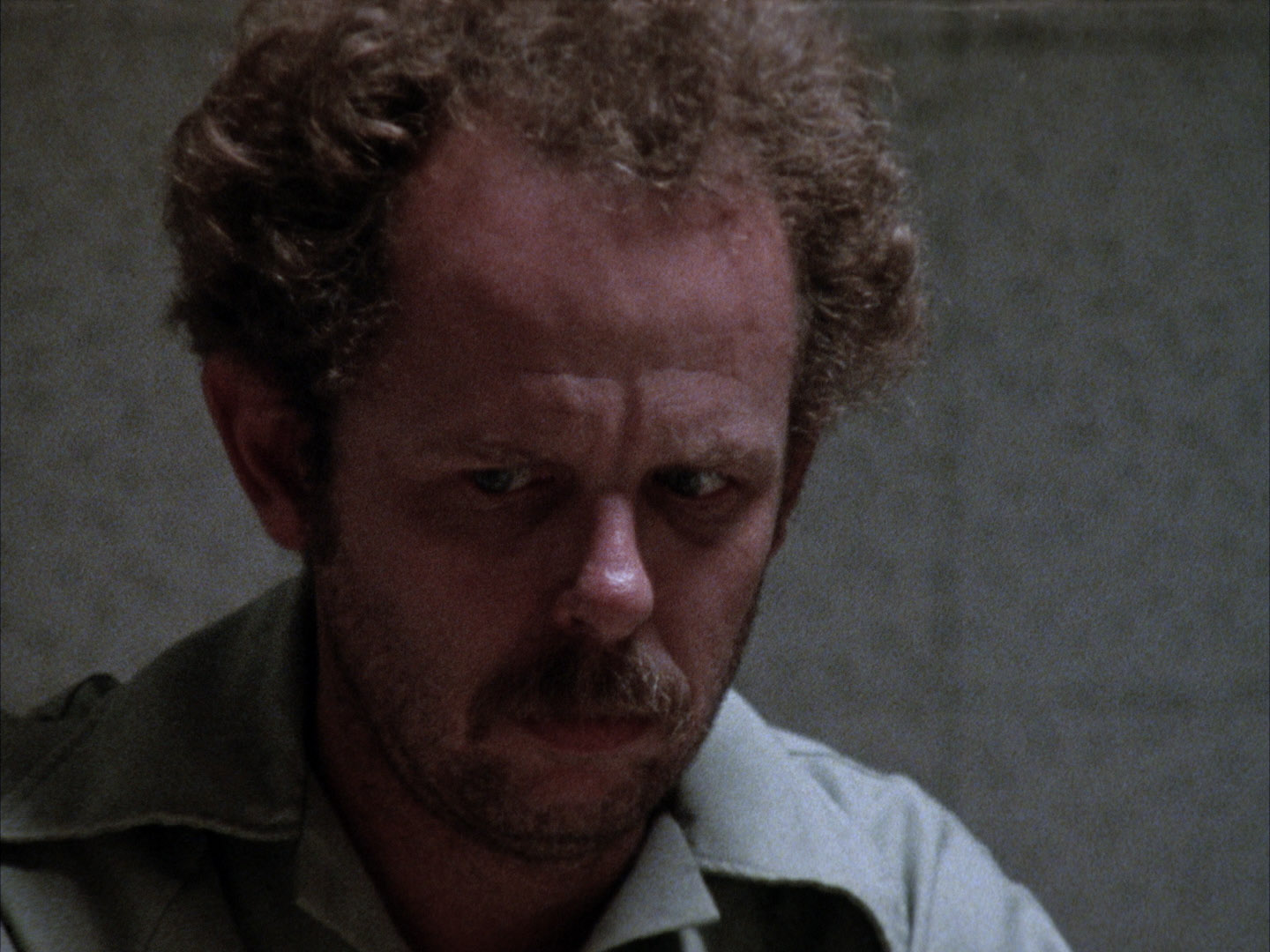
Based on the real-life exploits of notorious American serial killer, Henry Lee Lucas, Confessions of a Serial Killer undoubtedly portrays the gritty and seedy elements of these heinous crimes unambiguously. Structured as a series of flashback vignettes being recounted to the investigators in charge of corroborating his wild claims, the film admirably translates the murderous squaller that was Henry’s life before his capture. However, with this constant back and forth between vignettes and framing device, the story can feel choppy at times–feeling unconnected from each other besides the killer’s introduction to each scene.
Additionally, being the first uncut release of Confessions of a Serial Killer, the film boasts an extra 15 minutes of scenes deemed too extreme for the theatrical release. Scenes, where a 15-year-old Daniel Ray Hawkins murders a prostitute, Hawkins and his sister (as children), watch their mother have sex with two men, as well as the group’s discussion of starting a violent sex magazine are just a few examples of the content which has been lovingly restored to this uncut version.
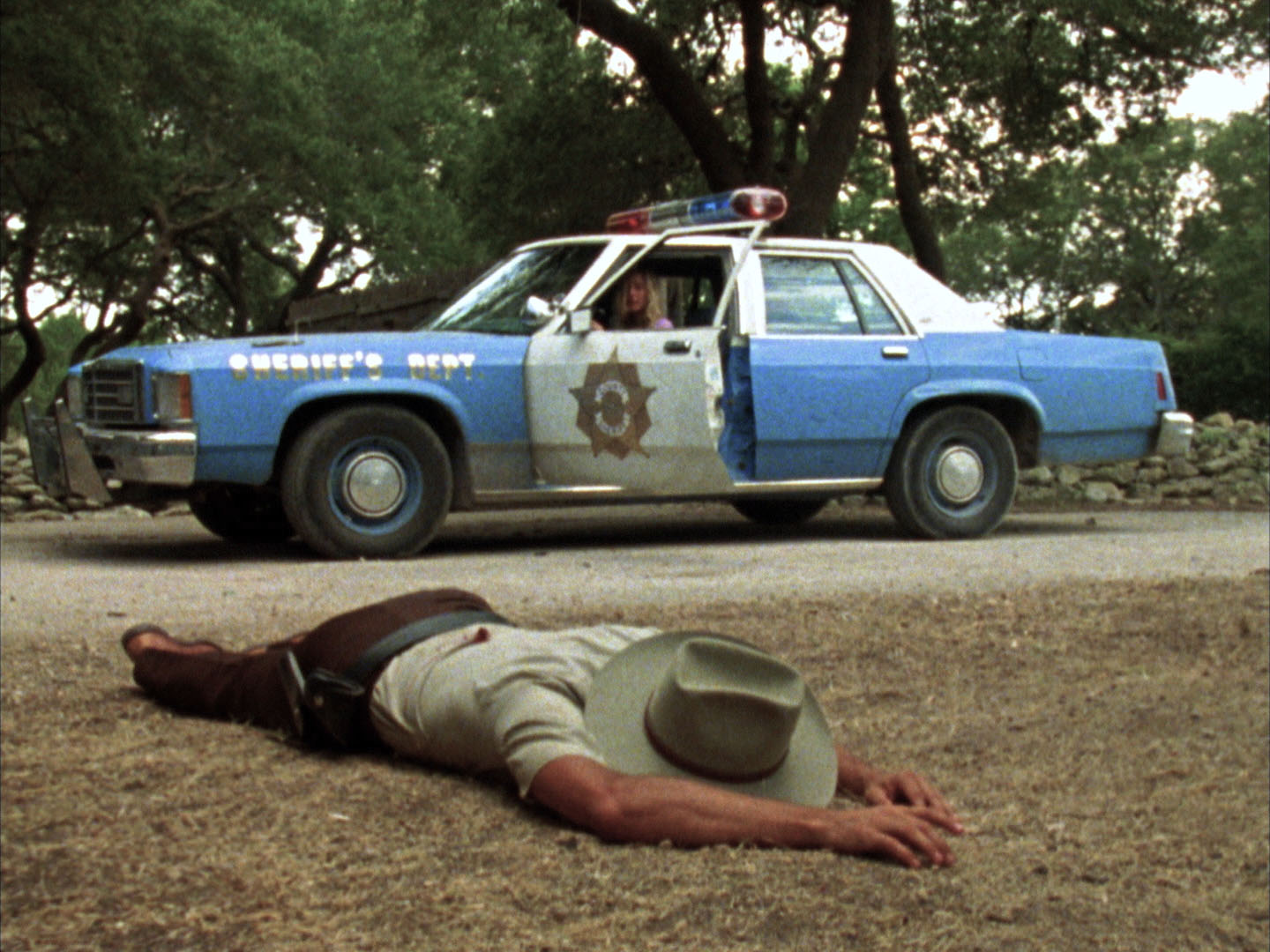
Captured on grainy 16mm film, the visual design undoubtedly compliments the grizzly tone of the atmosphere. Yet, the film is surprisingly restrained regarding its depiction of violence–never relying on a shocking display of gore and instead allowing the ambiance, acting, and score to create the disturbing elements even more so. The score utilizes a mixture of synths and thudding strings to contrive an incredible tension that hardly ceases during the vignettes. However, the use of ambient sounds can also create a similar tension–such as the use of a revving chainsaw in the distance becoming louder as their next victim grows closer to the murder scene of their last.
While all the performances in the film range from serviceable to admirable, the real standout is delivered by our protagonist, played by Robert A. Burns. Originally bought on set to oversee the special effects, the departure of the original actor in the lead role paved the way for Robert to give a remarkable on-the-spot audition–being cast instantly. Providing a multifaceted performance, Robert successfully maintains a tightrope of a simple, friendly character twinned with a cold, cruel, and dangerous individual with no moral compass or compassion–seemingly taking delight in the suffering and death of anyone unlucky enough to cross the path of him and his companions.
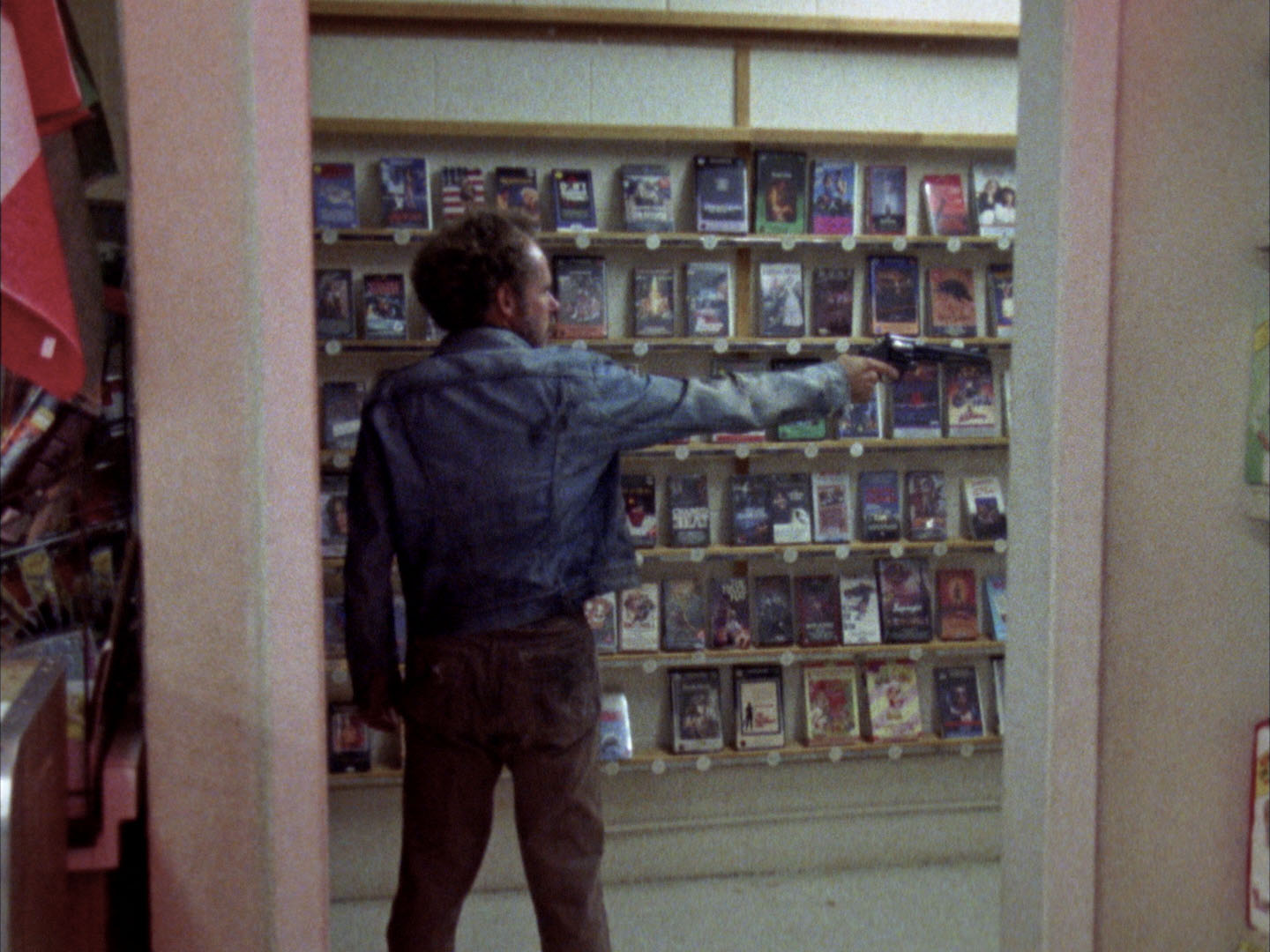
A gritty piece of violent exploitation, Confessions of a Serial Killer is undoubtedly a more faithful retelling of the crimes perpetrated by Henry Lee Lucas compared to the similarly themed Henry: Portrait of a Serial Killer. While both films take artistic liberties when it comes to accuracy, Confessions certainly contains more elements of the real-life case compared to its counterpart–feeling more like a biopic and a horror thriller with light similarities.

Confessions of a Serial Killer (1985) is available to purchase from Unearthed Films’ website here.
More Film Reviews
Self-described as a metalhead for life, Chilean filmmaker Patricio Valladares makes some noise in this year’s version of Unnamed Footage Festival. Taking place in San Francisco, this event is proud… Maniac Driver is a 2020 Japanese horror thriller, written and directed by Kurando Mitsutake. Mitsutake has worked in many areas of film production but is most notable as the director… Waxwork (1988), Anthony Hickox’s directorial debut, is a half-baked comedy horror film with a tedious build-up, unmemorable characters, confusing lore, and a long-overdue payoff. Although it already fell at the… As a newcomer to the Halloween franchise, I am less experienced with the later sequels to have any attachment to the worldbuilding, and I controversially thought Rob Zombie’s film was… August Underground is a 2001 extreme found footage film, written and directed by Fred Vogel with additional writing from Allen Peters. The film was produced by TOETAG Pictures with effects… Imagine if, in the early 1980s, nascent film directors John Hughes and Wes Craven met up with venerable science fiction author Ray Bradbury at a Northern California artist’s retreat. There,…Invoking Yell (2023) Film Review- Not with a Bang but with a Shriek (Unnamed Footage Festival 666)
Maniac Driver (2020) Film Review – Destination Murder
Waxwork (1988) Film Review – As it Waxes Nostalgic
Halloween Kills Film Review (2021) – Michael Walks Home
August Underground (2001) Film Review – Found Footage Filth
Detention (2011) Film Review – Never Going Back to My Old School

Hey there, I’m Jim and I’m located in London, UK. I am a Writer and Managing Director here at Grimoire of Horror. A lifelong love of horror and writing has led me down this rabbit hole, allowing me to meet many amazing people and experience some truly original artwork. I specialise in world cinema, manga/graphic novels, and video games but will sometime traverse into the unknown in search of adventure.

